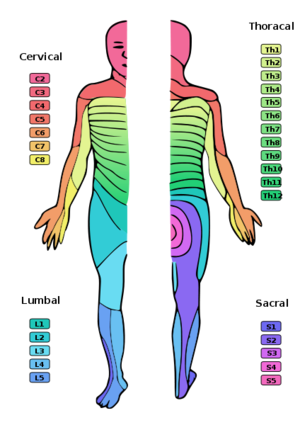There is a condition that affects hundreds of thousands of Americans after surgery and traumatic injuries, but not many doctors know about it. It causes patients to suffer with excruciating pain that is hard to cope with, and if not treated it can cause long term damage. The condition I am speaking of is called RSD or Reflex Sympathetic Dystrophy.
What is Reflex Sympathetic Dystrophy?
Unfortunately RSD is poorly understood by doctors around the world, its symptoms make it look like many other different problems which doctors normally treat. This leaves patients with RSD in pain.
RSD occurs when somebody has had major surgery or has suffered a traumatic injury. It is a chronic pain syndrome. It will make the patient have relentless pain in their bodies. RSD currently affects between 200,000 and 1.2 million Americans.
RSD is a malfunction of the central nervous system. After the traumatic event, the body continues to send out pain signals to the brain even after the patient has healed from their initial injury.
The part of the nervous system that is affected is called the Sympathetic Nervous System, which is part of the Autonomic Nervous system. There are nerves that run up and down the length of the spine. The Autonomic Nervous System controls autonomic functions of the body that humans cannot control such as blood pressure, sweating, and even heart rate.
What are the symptoms?
In the first one to three months people who suffer from RSD could have symptoms such as burning pains, swelling, increased sensitivity to touch, increased hair growth and even increased nail growth. Color changes of the skin and temperature changes are also common.
If the problem is not dealt with the patient could also suffer from frequent infections, redness, joint pain, tremors, muscle spasm, excessive sweating, migraines and dermatitis or eczema.
Could there be complications?
As with any chronic illness there could certainly be some complications. The most common is depression and anxiety. Other complications include skin, muscle and bone atrophy (wasting). The atrophy may occur because of reduced functions of the affected limb.
How is it Diagnosed?
RSD can be very difficult to diagnose. Usually a full neurological examination will be needed to diagnose the problem. Physical examinations are also needed. During the physical exam doctors will look for signs of changing skin color, swelling, vascular reactivity, overgrown or grooved nails, swollen or swift joints and muscle weakness.
How is it treated?
There are many ways to treat RSD and they include medication to control the pain, mobilization of the affected limb, physical therapy and nerve blocks. The constant pain will be treated with medications such as Gabapentin and Lyrica, Muscle stiffness can be treated with medications such as Zanaflex and Klonopin, and Muscle cramps can be treated with Baclofen.
Nerve blocks are another way to treat RSD. Sympathetic nerve blocks interrupt the transmission of pain signals that are sent to the brain. The nerve block is administered by a physician insert a needle into the appropriate location along the spine. An anesthesia will then be injected into the affected area. The effects of the block will be monitored over a course of a few months to see if it is working. The hope is that the block will reset the Sympathetic Nervous system back to the state before the injury or surgery.
There is no doubt that people with RSD suffer a lot of pain. It is very important to get to your doctor as soon as possible if you experience any of the symptoms that were mentioned above. Without proper treatment, nerve damage could become permanent, so it is vital that you seek professional help a soon as possible.
Sources:
www.rsds.org
self (currently suffering with RSD)


